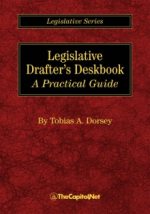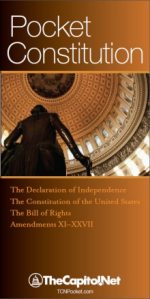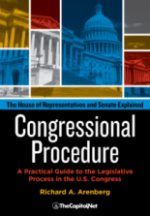From the Congressional Glossary – Including Legislative and Budget Terms
Executive Order
Obama signs Executive Order NDRP Martial Law – Hannity Full News Clip Fox News (Mar 19, 2012)
Executive orders are unilateral orders issued by the president, without congressional approval. They are official documents, numbered consecutively, through which the president manages the operations of the federal government. Presidential executive orders and proclamations are available through the National Archives web site and also in the Federal Register.
Examples of executive orders include Executive Order 9066, signed by President Franklin Roosevelt on February 19, 1942, which authorized the internment of tens of thousands of American citizens of Japanese ancestry and resident aliens from Japan, and Executive Order 10340, signed by President Truman on December 16, 1950, directing the secretary of commerce to take possession of and operate the plants and facilities of certain steel companies. The Supreme Court in Youngstown Sheet & Tube Co. v. Sawyer, 343 U.S. 579 (1952), held that Executive Order 10340 “was not authorized by the Constitution or laws of the United States; and it cannot stand.”
In Response to Executive Order 9066
Executive orders are written instruments through which a President can issue directives to shape policy. Although the U.S. Constitution does not address executive orders and no statute grants the President the general power to issue them, authority to issue such orders is accepted as an inherent aspect of presidential power, though their legal effect depends on various considerations.
- Issuance of Executive Orders. The typical process for issuing an executive order is set
forth in an executive order issued by President John F. Kennedy. That process is coordinated by the Office of Management and Budget (OMB), which receives comments and language from impacted and interested agencies. Once OMB and stakeholder agencies have reviewed the draft language, the draft order is sent to the Attorney General and Director of the Office of the Federal Register for review, and then on to the President for signing. After signing, executive orders are generally published in the Federal Register. Not all executive orders go through this process.- Authority for Executive Orders. Executive orders typically convey presidential directives intended to have the force and effect of law. To have legal effect, those directives must be issued pursuant to one of the President’s sources of power: either Article II of the Constitution or a delegation of power from Congress. One way that Congress can delegate power to the President is by enacting a statute before the order issues. Congress can also ratify an already-issued executive order by enacting a statute, or can in rare circumstances impliedly ratify an executive order through inaction.
How do executive orders work? – Christina Greer
- Judicial Review of Executive Orders. Courts sometimes review the legality of executive orders. For example, a court may determine whether the President may act at all. In those circumstances, the court will employ a three-part analysis articulated by Justice Robert Jackson in his concurring opinion to the Supreme Court’s decision in Youngstown Sheet & Tube Co. v. Sawyer. In other cases, a reviewing court may determine the scope of Congress’s delegation of power to the President. To perform that analysis, courts will generally use traditional tools of statutory interpretation. Courts may also be required to determine the scope of the President’s action in the executive order. Courts will begin with the text of the executive order, and may defer to agency interpretations of that order (depending on the circumstances of the particular case). Separately, courts may also review other constitutional issues raised by the executive order (for example, whether the order violates the First Amendment to the U.S. Constitution).
- Modification and Revocation of Executive Orders. A President may amend, rescind, or revoke a prior executive order issued by his or an earlier Administration. Although executive orders can be flexible and powerful, they can also be impermanent because a later President can, generally, revoke or modify any previously issued executive order with which he disagrees. Similarly, Congress may nullify the legal effect of an executive order issued pursuant to power that it delegated to the President.
Not all presidential directives take the form of an executive order. For example, some directives take the form of presidential proclamations and executive memoranda. Although a House of Representatives committee report observed that executive orders tend to be directed toward government officials and proclamations tend to be directed at private parties, there is no clear substantive distinction between these forms of executive action (other than the way they are titled). Regardless of the form of directive, each must be issued pursuant to one of the President’s powers to have legal effect. Although the form of the directive may dictate whether it is published in the Federal Register, there is no general legal requirement that the President use a particular type of directive to do a particular thing (although a statute giving power to the President may require that the President exercise that power using a particular directive).
Ken Gormley interviews Chief Justice Rehnquist (2002) about the Steel Seizure Case (1952)
Also see
- Executive Branch (CongressionalGlossary.com)
- Federal Register (CongressionalGlossary.com)
- President of the United States (CongressionalGlossary.com)
- § 9.70 Laws and Their Codification, in Congressional Deskbook.
- 8. E. Congressional Oversight, in Congressional Procedure
More
- Executive Order 9066: The President Authorizes Japanese Relocation – History Matters at GMU
- Executive Order 9066: Resulting in the Relocation of Japanese (1942) – ourdocuments.gov
- Forbidden Citizens: Chinese Exclusion and the U.S. Congress
- Executive Order 13603: National Defense Resources Preparedness, March 16, 2012 – FDsys (10-page PDF
 )
) - Executive Orders – National Archives
- Executive Orders Disposition Tables Index – National Archives
- Executive Orders – Federal Register
- Executive Orders, 1993 to Present (from the Compilation of Presidential Documents) – Govinfo.gov
- Executive Orders – The American Presidency Project (UCSB)
- “How President Obama Could be Swept Away with His Executive Orders That Defy Congress and the Courts“, CATO, January 30, 2014
- Executive Order – Wikipedia
- “Executive Orders: An Introduction,” CRS Report R46738 (30-page PDF
 )
) - “Executive Order 12919: Emergency Powers of the President,” CRS Report RS20711 (7-page PDF
 )
) - “Lobbying the Executive Branch: Current Practices and Options for Change,” CRS Report R40947 (22-page PDF
 )
) - “Presidential Directives: Background and Overview,” CRS Report 98-611 (22-page PDF
 )
) - “Computer Security: A Summary of Selected Federal Laws, Executive Orders, and Presidential Directives,” CRS Report RL32357 (19-page PDF
 )
) - “Executive Branch Reorganization and Management Initiatives,” CRS Report RL33441 (27-page PDF
 )
) - “Executive Orders: Issuance, Modification, and Revocation,” CRS Report RS20846 (15-page PDF
 )
) - “Executive Branch Reorganization Initiatives During the 112th Congress: A Brief Overview,” CRS Report R41841 (25-page PDF
 )
) - “Establishment of Task Force on the U.S. Postal Service,” CRS Insight IN10893 (5-page PDF
 )
) - “The Meaning of ‘Made in U.S.A.’,” CRS Report R44755 (16-page PDF
 )
) - “The 2013 Cybersecurity Executive Order: Overview and Considerations for Congress,” CRS Report R42984 (28-page PDF
 )
) - “The Trump Administration’s Reform Plan and Reorganization Recommendations,” CRS Insight IN10920 (xx-page PDF
 )
) - Executive Orders, Heritage
Presidential Powers 2: Crash Course Government and Politics
Courses
- Congressional Operations Briefing – Capitol Hill Workshop
- Drafting Federal Legislation and Amendments
- Writing for Government and Business: Critical Thinking and Writing
- Custom Training
- Drafting Effective Federal Legislation and Amendments in a Nutshell, Audio Course on CD
- Congress, the Legislative Process, and the Fundamentals of Lawmaking Series, a Nine-Course series on CD
Publications

Legislative Drafter’s Deskbook: A Practical Guide

Pocket Constitution

Citizen’s Handbook to Influencing Elected Officials: A Guide for Citizen Lobbyists and Grassroots Advocates

Congressional Procedure
CongressionalGlossary.com, from TheCapitol.Net
For more than 40 years, TheCapitol.Net and its predecessor, Congressional Quarterly Executive Conferences, have been teaching professionals from government, military, business, and NGOs about the dynamics and operations of the legislative and executive branches and how to work with them.
Our custom on-site and online training, publications, and audio courses include congressional operations, legislative and budget process, communication and advocacy, media and public relations, testifying before Congress, research skills, legislative drafting, critical thinking and writing, and more.
TheCapitol.Net is on the GSA Schedule, MAS, for custom on-site and online training. GSA Contract GS02F0192X
TheCapitol.Net is now owned by the Sunwater Institute.
Teaching how Washington and Congress work ™

